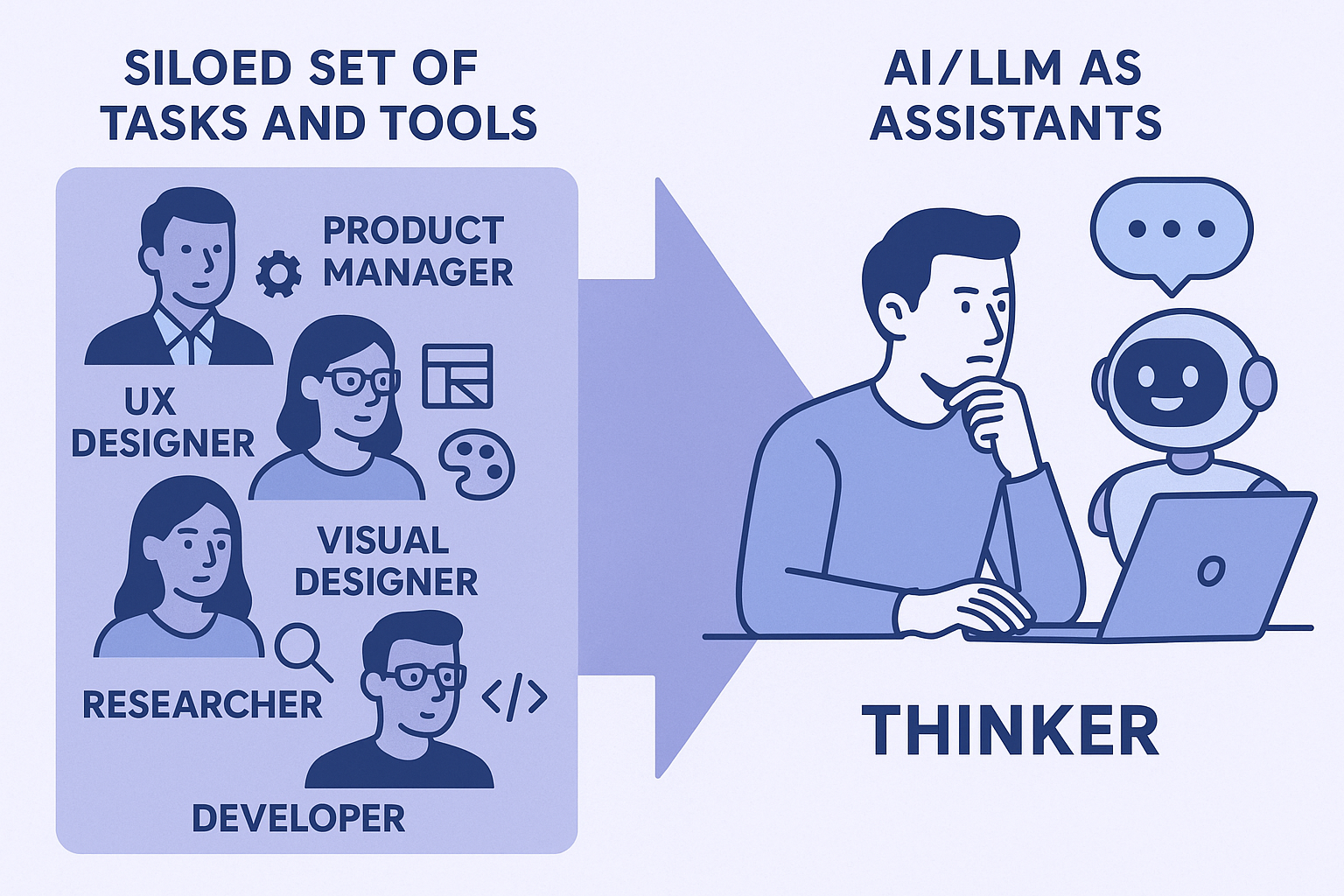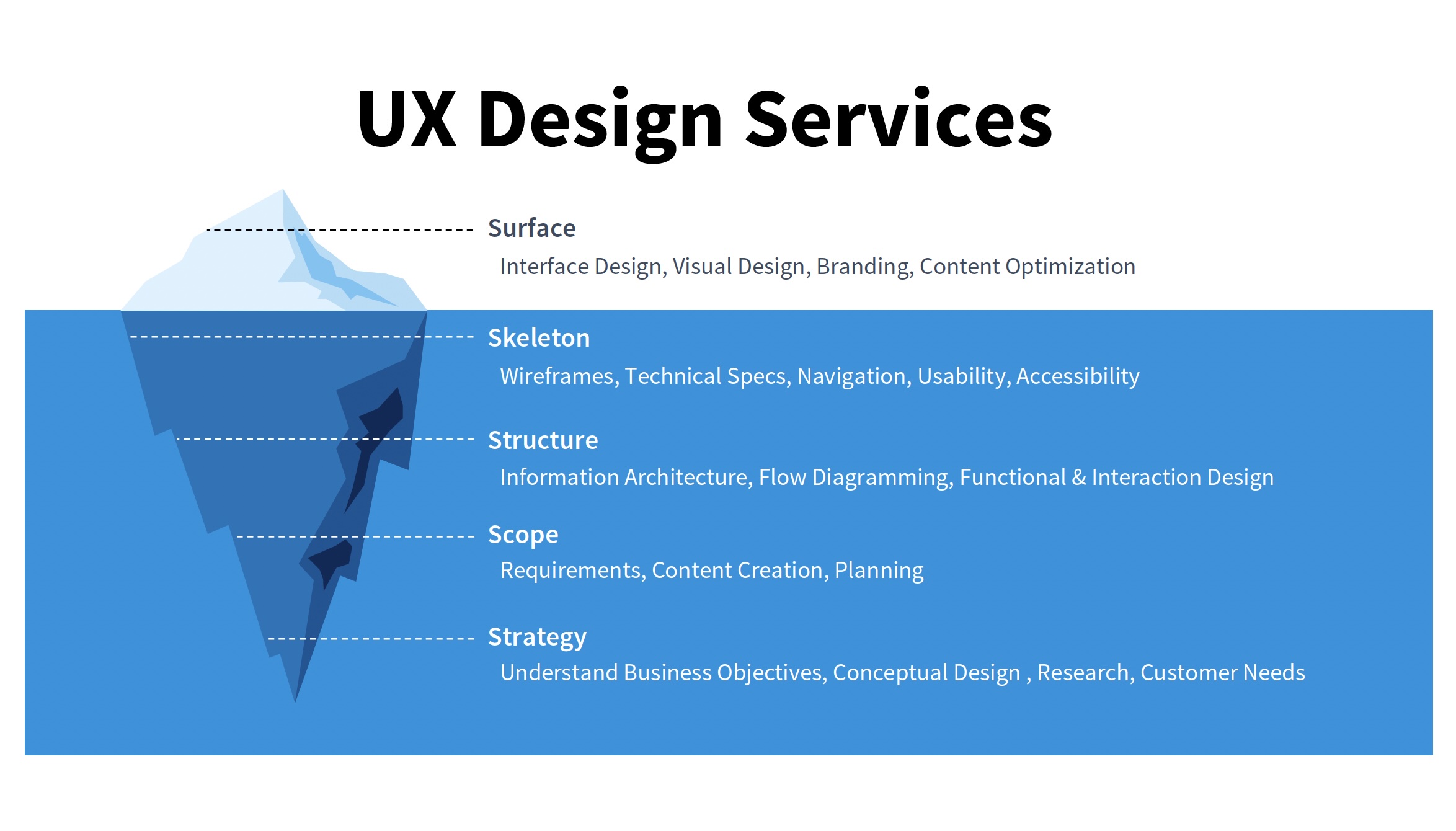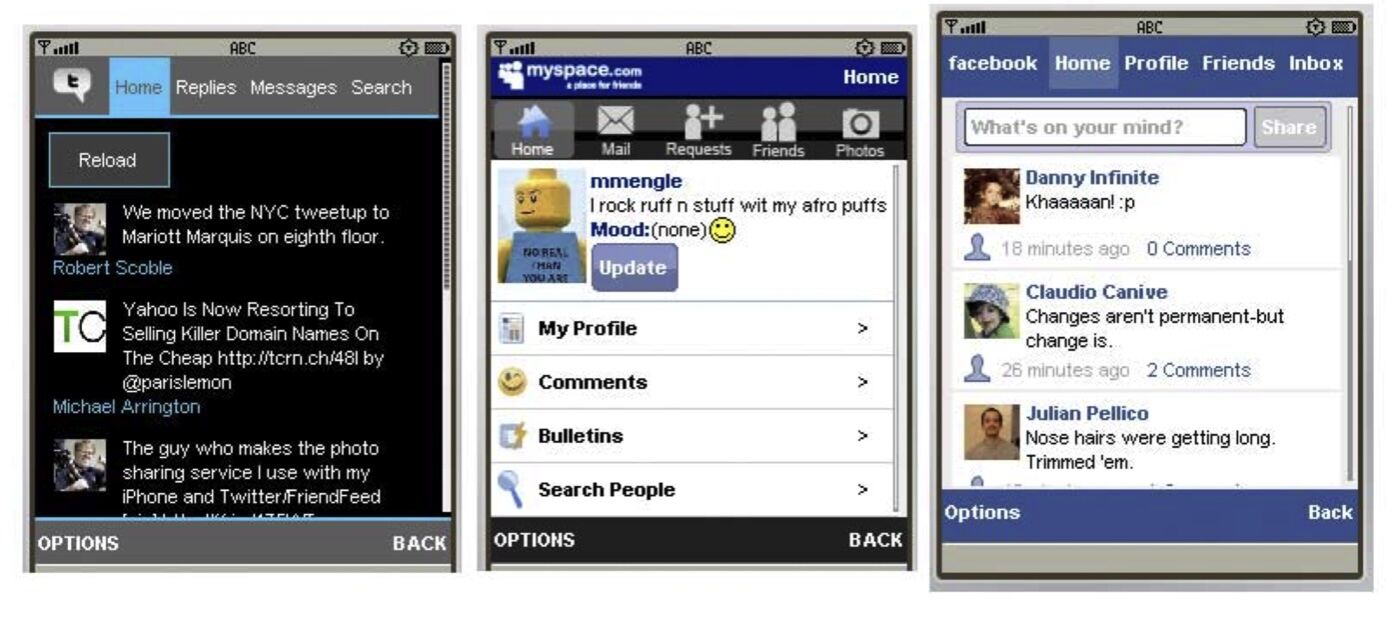The future of product management and design
Roles once defined by siloed tasks and specialized tools are rapidly evolving.
July 21, 2025
The future of product management and design is transforming rapidly. Roles once defined by siloed tasks and specialized tools—product managers, UX designers, visual designers, researchers, and developers—are evolving.

With the rise of AI and large language models, the repetitive, mechanical aspects of our work—wire-framing, documentation, code scaffolding, user research synthesis—are increasingly offloaded to intelligent assistants. What’s emerging is a new model: humans as strategic thinkers, decision-makers, and subject matter experts, guiding the tools rather than being limited by them.
Having started my career as a T-Shaped product manager/designer (Thanks in part to being handed a copy of "Don't Make Me Think" by Steve Krug 20 years ago) I've seen the industry separate into silos - PM, UX, Visual, Research, Developer - each with their own sets of tools, and now it seems like things are converging back together again, yet vastly changed.
When I started we were writing detailed specification documents. Outlining the minute details, everything that the team needed to know. Documenting functionality. Walk, turn left. Stop, Look around. Open the door. Walk through the door. How would a user need to interact with the product. What order of information would be presented to them. Define every step. What mood and tone did we want to create? Does it work? Where does it fail?
As a product manager, you would consult with the SMEs for each discipline and combine that with your own knowledge and business requirements.
You compiled it into a document that was disseminated to the team. We would review, make changes and then begin building.
Over time things evolved. We became much more agile, there were more specialized teams. UX Design exploded as a discipline. UI-focused front-end code libraries and frameworks were born. Specialized teams to collect and analyze data, conduct product and user research, rigorous QA that worked tirelessly to find bugs in the product until (hopefully) they couldn’t find any more. Design Systems blossomed.
In less than a year, things have dramatically changed.
It is now possible for someone utilizing AI to research and vet an idea, prompt for copy, visual designs, images, vibe code framework, and have the beginnings of a workable, usable digital product, but it would still just be a beginning.
This is where knowledge, experience, and taste — experts in a field — come into play. Is the idea a good one? Is the code designed the right way? Are there things we missed? How will someone using the product feel? These are the questions and problem statements that only a human can really conceive.
Roles are beginning to converge and consolidate.
How exactly? That is not yet clear. What is clear is that the tools are now evolving very fast, but the knowledge and creative thinking part has been and always will be the primary skill someone - a thinking human - is going to need in the future.
What are your thoughts?

